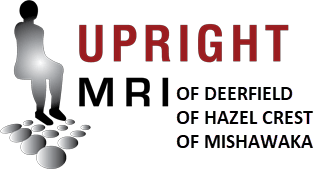MRI FOOT SCAN
SEND US A MESSAGE
MRI Foot Scan - Form
Do I need an MRI Foot Scan?
An MRI foot scan is a diagnostic tool used to image the structures of the foot and ankle. You might need an MRI foot scan if you experience any of the following symptoms: pain in one or both feet, swelling, redness or warmth, numbness or tingling, stiffness, or decreased sensation in the feet.
Some common causes of foot pain include plantar fasciitis, Morton’s neuroma, bone fractures, arthritis, and torn ligaments. Your doctor will be able to determine if you need an MRI scan based on a physical examination and a review of your medical history.
The symptoms of each of these conditions can vary, so it is important to seek medical advice if you are experiencing any type of foot or ankle pain. Talk to your doctor to determine the cause of the pain and whether an MRI foot scan is necessary.
What does an MRI Foot Scan look like?
An MRI foot scan is a painless diagnostic test that uses powerful magnets and radio waves to create detailed images of the bones, muscles, and ligaments in the foot. It can help diagnose a wide range of conditions such as fractures, muscle tears, infections, and tumors.
A typical MRI machine looks like a large, hollow tube. Wearing a hospital gown or loose-fitting clothes, you’ll lie on an exam table that slides into the tube. An MRI foot scan looks very similar to an MRI of any other body part. The technician will ask you to lie down on a table that will move into the scanning machine. Once you are in position, the technician will leave the room and the machine will begin to make loud noises. You will be able to hear the technician through a speaker in the machine, and they will be able to speak with you through a microphone. Expect to hold still between 15 and 45 minutes while the machine takes images of your foot/ankle.
Can I book my own MRI Foot Scan?
It depends. While some facilities allow you to book your own MRI scan, others require you to obtain a referral from a doctor. However, getting an accurate diagnosis is key to receiving effective treatment. That’s why it's important to speak with a doctor if you're experiencing any foot pain so you can get a proper diagnosis and find the best treatment plan for you.
It's also a good idea to check with your insurance company to see if they will cover the cost. Some insurance companies require you to get a referral from your doctor before you can have an MRI scan performed.
Your doctor can help you determine whether an MRI is the best course of action for diagnosing your foot pain. So if you're considering having an MRI scan, be sure to consult with your doctor first to discuss whether it's the right option for you.
What is the cost of an MRI Foot Scan?
The cost for an MRI foot scan can range widely from $500 to $4,000, depending on the location, type of facility, and the body part being imaged. Some health insurance companies may cover a portion of the cost. However, it is important to check with your specific plan prior to scheduling the procedure to determine what, if any, coverage you may have. If you are uninsured or do not have medical insurance, there are facilities that offer lower rates. For example, the National Imaging Associates (NIA) offers discounted rates for those who do not have medical insurance or who are unable to pay the full price. NIA also has a financial assistance program for those who qualify.
What is the difference between an MRI Foot Scan and an X-ray of the Foot?
An MRI foot scan is far more accurate in detecting damage and problems in the foot than an X-ray. It uses a strong magnetic field and radio waves to create clear and detailed images from multiple angles of the inside of the body. An X-ray on the other hand uses radiation to produce a single, flat image.
An MRI can detect issues such as ligament and tendon damage, stress fractures, and even soft tissue tumors. While an X-ray is good for detecting damage to the bones and joints in the foot, it does not provide as much detail of soft tissues as an MRI does. So if you are experiencing any pain or discomfort in your foot/ankle, it is highly recommended that you get an MRI scan to determine the cause.
I am claustrophobic, how can I minimize my stress for an MRI Foot Scan?
If you are claustrophobic, I would recommend talking to your doctor about your concerns and seeing if there is a technique that can help you relax prior to the scan. Some people find it helpful to take deep breaths or practice relaxation techniques during the scan. You could also try wearing headphones and listening to calming music.
You may even ask your doctor if you can have a sedative before the procedure to help minimize your stress for the MRI scan. Many people find that sedatives help them relax and reduce their fear and anxiety. Some doctors may also prescribe medication to help calm you down before the scan. Be sure to discuss your concerns with your doctor so they can help make you feel as comfortable as possible.
However, unlike many traditional MRI scans that are dark, enclosed, and tunnel-like machines, there are some clinics that do offer an Open MRI scan for their patients. These Open Upright MRI machines provide a stress-free experience for people who suffer from claustrophobia and anxiety, giving them the peace-of-mind that they need. The Upright MRI is also the only scanner that can image patients in any position. Its multiposition capabilities provide more detailed and high-quality images that produce the most accurate results. Furthermore, the Upright MRI scan is 70% quieter than the standard closed MRI, which is known for making continuous, loud banging noises.
Contact Upright MRI of Deerfield
If you are someone who is claustrophobic or is sensitive to loud sounds, you should consider finding a facility, like Upright MRI of Deerfield (UMD), which offers an Open MRI solution that is quiet, comfortable, and non-confined as opposed to the traditional MRI option. Contact us by via online form or call Upright MRI for an Appointment: 847-291-9321.



